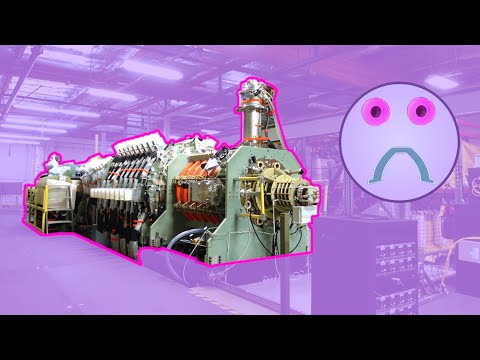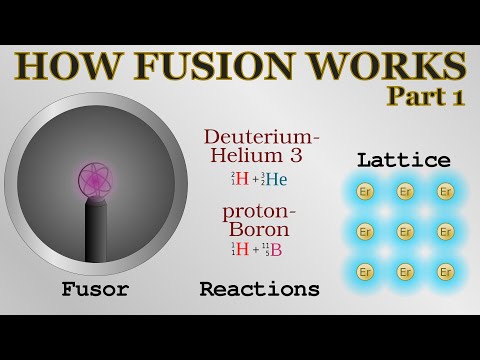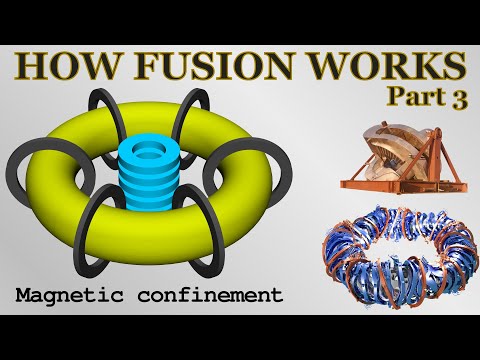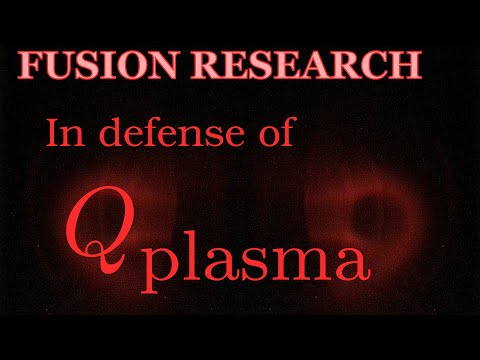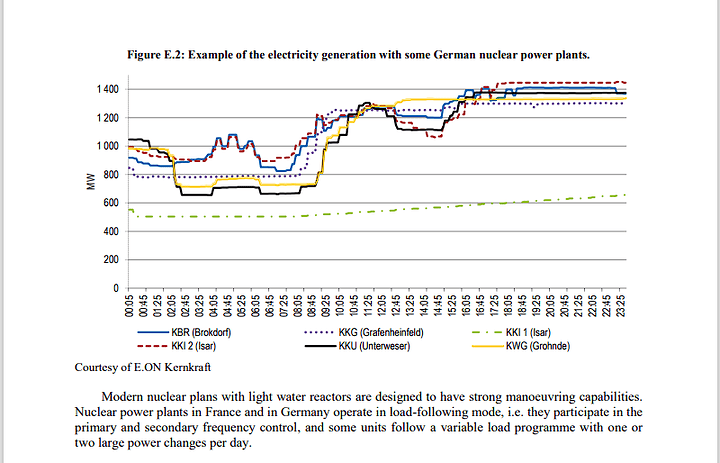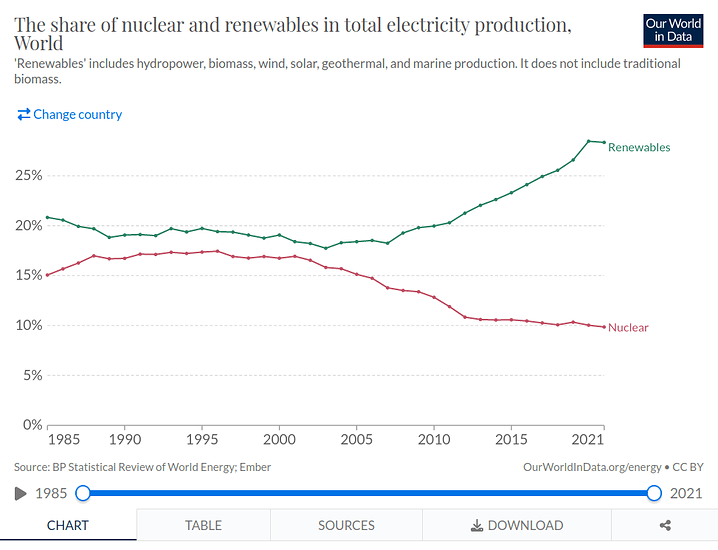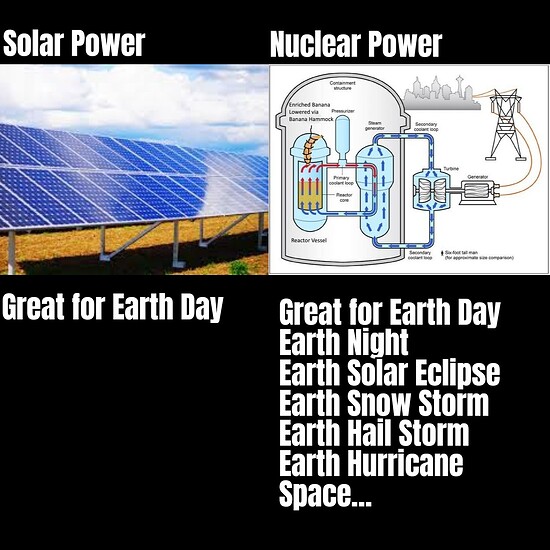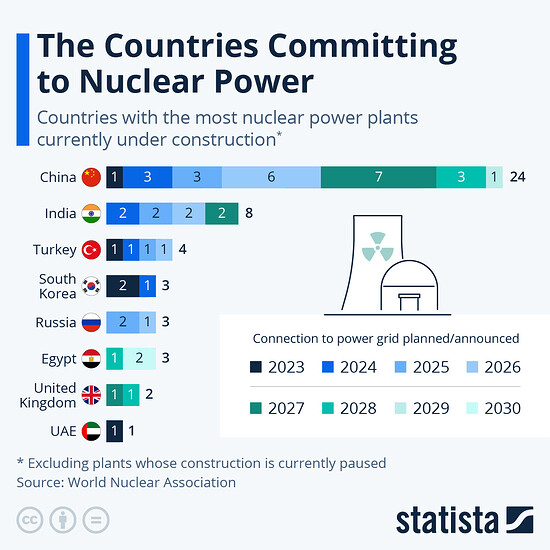It’s basically trying to get structural alloys with lower neutron cross section constituents?
At least martensitic alloys are easier to machine; the current austenitic stuff is no fun.
Me, not being a material scientist:
I wonder if there exists some kind of high temperature metal hydride complex they could mix in with the liquid blanket to gobble up the tritium and store it for a later, controlled release and capture.
Me, not being a nuclear engineer:
I wonder if they could redesign pretty much all the structures of the vessel so that the blanket took the brunt of the neutron damage instead of the structural materials; that way the blanket could be replenished by pumping out the old one and pluming in a new one instead of a decommissioning.
As an interesting side note I just found out my brother in law helps make the hohlraums for inertial confinement fusion.
I was talking about sputtering and he brought up sputtering uranium and I thought that sounded really sketchy and asked what it was for and apparently the fusion hohlraums use uranium, if I remember right he said it was DU though.
Nuclear reactors take on average about 12 hours to reach full output. You can’t just punch a button and get 1000 MW of power instantly. They are simply not suitable for satisfying sudden unexpected demand.
In addition, if you’ve just sunk billions of dollars of capital investment into a reactor, you want it producing 24/7. Up front costs with nuclear are far more expensive, but once that investment is out of the way, operating costs are actually lower than other power sources. (Source: EIA Power Plant Operating Costs.) With those (and other) factors in mind, reactors are designed to run constantly between refueling outages. Refueling typically happens every 18 - 24 months, and in between the reactor is usually running full bore.
While this may well be true, incompetence and greed will continue to be a feature of any human endeavor as long as we have bureaucracies and bean counters. This must be accounted for (like all the other pros and cons) when weighing the risks of nuclear power. And the humans running governments, utilities and nuclear regulators change over time and can become corrupt, incompetent or greedy over the 30+ years of a reactor’s life.
Another risk I haven’t seen mentioned so far in this thread (and TBH I may well have missed it) is the risk of a hostile power attacking, or in the case of invasion, occupying a reactor. One of my biggest concerns with nuclear power would be a combatant taking a ‘scorched earth’ approach with a reactor, and deliberately causing a meltdown or leak. Is anyone here old enough to remember this?
I didn’t realise the small reactors are actually rolling out.
So not Just closing all nuclear over here in backwards UK…
(as per)
This is a very current concern with the war in Ukraine. We are one missile strike away from a massive disaster. It’s a huge boon that Russia is mostly downwind from Ukraine.
“Combatants” may include civil insurrectionists. That’d never happen in the USA… except that it did, and appears to be likely in the future.
Thanks for that information.
So if Nuclear can’t fill a peaking role, and the cost of nuclear power is 2-3x that of renewables, and getting worse, then I guess there’s not much of a place for it in a competitive electrical grid (and hence any country that wants to have/maintain a competitive economy). I guess it’ll be relegated to some kind of ‘backup/emergency’ role. Pity.
Ah but there is a potential role, and that is for what is termed as base load. That is the minimum amount of generation needed on any given day. Such ‘base loads’ need to be reliable, not intermittent like (most) renewables. Among renewables, hydropower can almost fill this role - except for droughts and floods. Geothermal is an interesting case, but not available everywhere and the economics can be risky given the unpredictability of a given site’s geological characteristics.
As for up front capital costs, that is supposedly being reduced by smaller, modern and cheaper designs. How much they will be reduced is still up in the air, especially since economics of scale will be needed to drive many of those costs down. And whether anybody is willing to invest given public reluctance and some of the genuine dangers is an open question.
One thing that should be noted is that even when accounting for disasters like Fukushima and Chernobyl, nuclear has had a stellar safety record. Yes, even when compared to renewables. People fall off wind turbines, and people fall off roofs installing and maintaining solar installations. Sabine Hossenfelder touched on this issue in one of the videos further up the thread. Some statistics on fatalities caused by nuclear and other energy sources:
What’s the Death Toll of Nuclear vs Other Energy Sources? | Engineering.com
But it’s potential dangers can’t really be ignored either.
Huh, that article does include realistic looking figures for the mass deaths and harm caused by fossil fuels.
But like you said. People are still scared of the small potential risk of large harm, instead of the large scale actual small harms currently being caused.
Some people do realise the benefits of nuclear vs fossil, but don’t want it in their local area- NIMBY.
Luckily I don’t have kids, so am not too invested in the future, but the current tech is cool, and developing tech even cooler.
It looks like the developed world is trying to change though, and of course Choina is just building all forms it can regardless of almost anything
The interesting thing about Geothermal is that it IS available everywhere and we already have the tools and people to exploit it. We could turn our existing oil and gas infrastructure into Geothermal very quickly.
The thing with Nuclear is that a good bit of expense is in all the regulation. I strongly suspect that we could improve standards and safety while streamlining regulation by doing a substantial overhaul of the laws.
You are right that they can run at full power all the time(which by the way is a feature and not a bug ![]() ), but saying they can’t adjust their output depending on the needs of the grid is just wrong.
), but saying they can’t adjust their output depending on the needs of the grid is just wrong.
Here’s two examples from Germany and France.
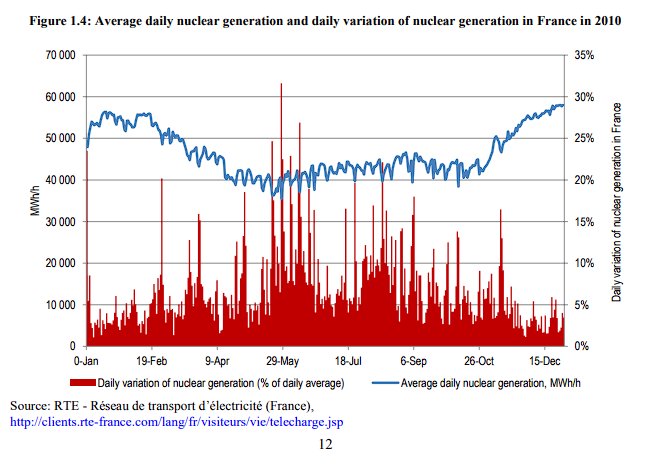
@imrazor scratches his head. Dunno, maybe European reactors have a different start up procedure. Here in the US, it’s a little different. Maybe that’s because the vast majority of the US nuclear fleet is comprised of older designs. I’m mostly familiar with Westinghouse pressurized water reactors.
Nuclear power plants use steam turbines, but these plants have additional time-intensive processes that involve managing their nuclear fuel. Almost all nuclear power plants require more than 12 hours to reach full operations. Power plants that require more than 12 hours to start up are increasingly rare. Only 4% of the generating capacity that came online from 2010 to 2019 requires more than half a day to reach full load.
Source:
US Energy Information Administration
From Wikipedia:
While most nuclear power plants in operation as of early 2000’s were already designed with strong load following capabilities, they might have not been used as such for purely economic reasons: nuclear power generation is composed almost entirely of fixed and sunk costs so lowering the power output doesn’t significantly reduce generating costs, so it is more effective to run them at full power most of the time. In countries where the baseload was predominantly nuclear (e.g. France) the load-following mode became economical due to overall electricity demand fluctuating throughout the day.
So, technically, nuclear power plants (NPP) can follow load quite well, but in the overwhelming majority of cases they do not closely follow load, because corporate profits can be maximised by running at as-close-to full power as possible.
From A Brief Survey of Load-Following Capabilities in Modern Nuclear Power Plants:
The EU has general requirements on NPP load-following. The European Utilities Requirements, an agreement between the grid operators of NPPs in England, France, and Germany, set requirements for modern NPPs as the following:
- NPPs should have continuous operating capabilities between 50% and 100% rated power.
- Power ramps should be able to reach 3%/min in the operating range.
- NPPs can go through full load variations (full power to minimum continuous power back to full power) at a maximum frequency of 2× per day, 5× per week, and 200× per year.
- NPPs can perform primary frequency control of electrical grids. This means that NPPs can adjust power rapidly to keep the grid frequency of 50 Hz stable. Rapid here means power output can change within ± 2% of current operating power within 30 seconds of a detected frequency variation.
The only places where NPPs load-follow as a matter of course are countries where nuclear power comprises a very large fraction of the grid energy mix. Essentially, that boils down to France, and only France, where > 60% of the mix is nuclear.
In all other countries, NPPs don’t follow load (don’t act as peakers), because $$$. Whether nuclear power plants can follow load or not is therefore academic. Their failure to do so is not a technical challenge, it’s an issue of profitability.
One could basically summarise the situation by saying: The majority of all the NPP in the world are run at high and fixed utilisation rates providing baseload power. The majority of the remaining NPP cycle between high and medium rates daily to roughly match peak and off-peak demand. Only a very, very small number of (primarily French) NPP actually make use of their load-following abilities to follow load on a ‘continuous’ (>2 rate changes per day) basis, and even those operate within a window of 50-100% of maximum output.
Technically, “Can Nuclear Power Plants operate as peakers?” Yes.
Economically, “Can Nuclear Power Plants operate as peakers?” No.
Therefore, “Will Nuclear Power Plants be operated as peakers?” No. (Unless you are France.)
Basically, economics prevents nuclear power from filling any role in the grid apart from baseload.* Even performing in that, its most economic role, it is still 2-3x as expensive as renewables. Grid-scale energy storage solutions (e.g. pumped hydro, batteries) thus need only have round-trip efficiency levels of ~33% or more for renewables to eat nuclear’s baseload lunch. As 80-85% solutions have existed for a while, and are coming online at an ever-increasing rate, the future of nuclear energy seems clear.
Interesting to see this experiment making progress.
Interesting news.
